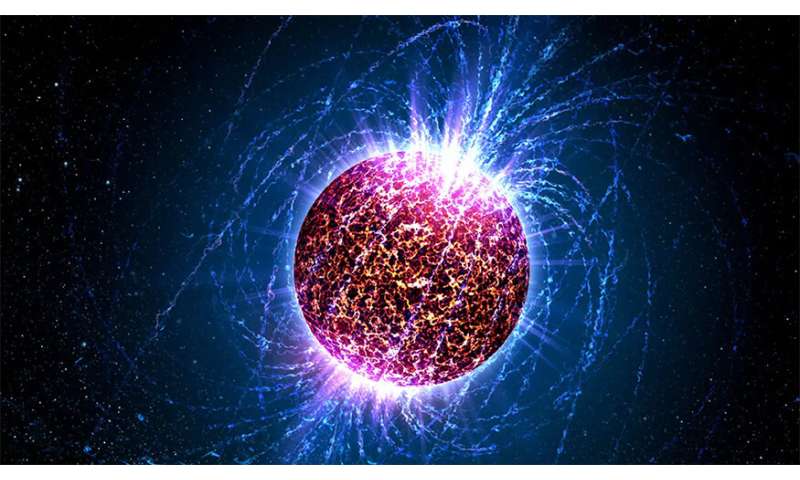#Looking skin deep at the growth of neutron stars
“#Looking skin deep at the growth of neutron stars”

In atomic nuclei, protons and neutrons share energy and momentum in tight quarters. But exactly how they share the energy that keeps them bound within the nucleus—and even where they are within the nucleus—remain key puzzles for nuclear physicists.
A new study by researchers at Lawrence Livermore National Laboratory (LLNL) and Washington University in St. Louis tackled these questions by leveraging data from nuclear scattering experiments to make stringent constraints on how nucleons (neutrons and protons) arrange themselves in the nucleus. The research appears in two corresponding papers in Physical Review C and Physical Review Letters.
Their analysis shows that for several cornerstone nuclei, a tiny fraction of the protons and neutrons possess the lion’s share of the overall energy that keeps them bound in nuclei, roughly 50 percent more than expected from standard theoretical treatments.
Further, the study makes new predictions for the “neutron skin” (a region where extra neutrons pile up) of several neutron-rich nuclei. In turn, these predictions are tightly connected to how large neutron stars grow and what elements are likely synthesized in neutron star mergers.
“Our results quantitatively indicate how asymmetry, charge and shell effects contribute to neutron skin generation and drive a disproportionate share of the total binding energy to the deepest nucleons,” said Cole Pruitt, LLNL postdoc and lead author of both papers.
Understanding how nuclear asymmetry energy changes with density is an essential input to the neutron equation-of-state, which determines neutron star structure. But it’s not easy to directly measure neutron skins. The 2010 Lead Radius Experiment, or PREX, provided the first model-independent neutron skin measurement for lead-208, but the measurement was swamped by large uncertainty. A more precise follow-up experiment, PREX II, ran in 2019 and is slated to release results soon.
“A comprehensive model should not only reproduce integrated quantities (like the charge radius or total binding energy) but also specify how nucleons share momentum and energy, all while being realistic about the model uncertainty of its predictions,” Pruitt said.
More information:
C. D. Pruitt et al. Isotopically resolved neutron total cross sections at intermediate energies, Physical Review C (2020). DOI: 10.1103/PhysRevC.102.034601
C. D. Pruitt et al. Systematic Matter and Binding-Energy Distributions from a Dispersive Optical Model Analysis, Physical Review Letters (2020). DOI: 10.1103/PhysRevLett.125.102501
Citation:
Looking skin deep at the growth of neutron stars (2020, September 4)
retrieved 4 September 2020
from https://phys.org/news/2020-09-skin-deep-growth-neutron-stars.html
This document is subject to copyright. Apart from any fair dealing for the purpose of private study or research, no
part may be reproduced without the written permission. The content is provided for information purposes only.
If you want to read more Like this articles, you can visit our Science category.
if you want to watch Movies or Tv Shows go to Dizi.BuradaBiliyorum.Com for forums sites go to Forum.BuradaBiliyorum.Com



